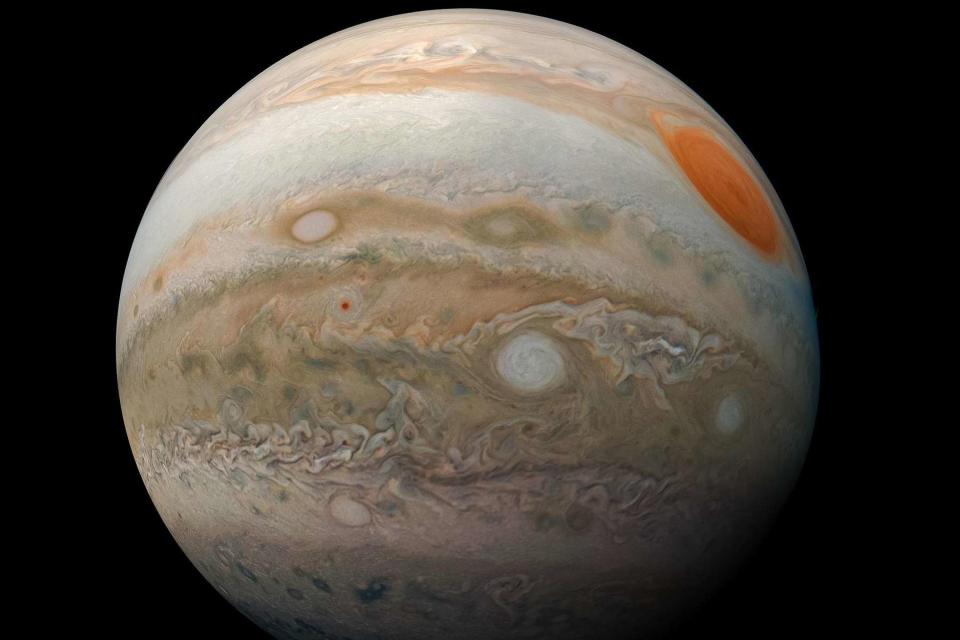Jupiter Will Be Closer to Earth Than It Has Been in 59 Years Tonight — How to See It
The Red Giant will look much bigger and brighter than usual.

Kevin M. Gill/NASA/JPL-Caltech/SwRI/MSSS
Stargazers, ready your telescopes. Jupiter is about to reach opposition tonight, and this year's edition of the celestial event is a particularly special one.
A planet's opposition occurs when it appears opposite to the sun from the perspective of Earth. So in the case of Jupiter on Monday night, the planet will rise in the east as the sun sets in the west, separated by 180 degrees. (In other words, Earth is passing right in between Jupiter and the sun).
Jupiter's opposition happens every 13 months, so it's not a particularly rare occurrence. But this year's opposition happens to coincide with Jupiter's perihelion, or the point in its orbit at which it's closest to the sun. So that means that Jupiter is just 367 million miles away from Earth — the closest it's been to us since 1963, according to NASA.
That may seem like a far distance, but considering Jupiter can be up to 600 million miles away from Earth, the planet is considerably close by tonight.
In order to see Jupiter, all you have to do is go outside anytime from sunset to sunrise, and it should appear somewhere in the night sky. (You can check out the Old Farmer's Almanac's Planets Visible Tonight calculator to determine the exact time Jupiter will rise and set in your location.) Per EarthSky, it'll be brighter than any other star in the night sky, so it shouldn't be too hard to spot — just look to the east earlier in the evening and to the west closer to sunrise. You can also tap into the services of a stargazing app like Star Walk 2 or SkyView to help you find the planet.
As for getting a good look at Jupiter, you'll be able to see the planet with the naked eye, but it's best to use binoculars or telescopes to see more details, like its red-and-white stripes, the Great Red Spot, and its largest moons.
"With good binoculars, the banding (at least the central band) and three or four of the Galilean satellites (moons) should be visible," Adam Kobelski, a research astrophysicist at NASA’s Marshall Space Flight Center, said in a blog post. "It’s important to remember that Galileo observed these moons with 17th century optics. One of the key needs will be a stable mount for whatever system you use."
And if the weather isn't cooperative tonight, don't worry — Jupiter will still be very big and bright for the next few days, so you can take a look when the skies clear up.

